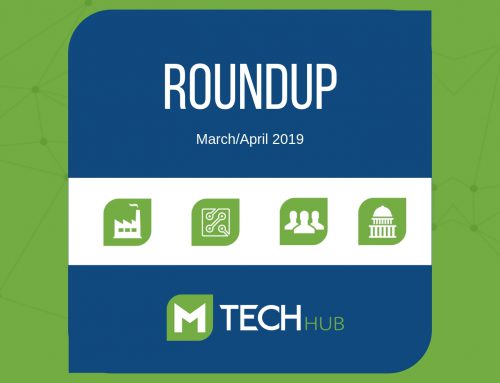Leading CEO’s know that digital transformation is the key to increasing everything about their company: its value, its productivity, its competitiveness, its sales, its market share—its longevity. You’ve watched companies like BlockBuster and Barnes and Nobel ignored this change and perished. However, the Digital Avalanche is officially here – hundreds of technology suppliers can be overwhelming for SMEs. Which CRM? What Social media strategy? Is our Website optimized for SEO? How can I optimize my AdWords spending? Am I getting the most of my ERP software?
Getting your “Digital Engine” revved up can be complex and bewildering. Digital touches every part of your organization as well as customers and suppliers. Your digital journey requires careful coordination of people, processes, and technologies.
CEOs today are looking for a digital roadmap. Common questions we hear from SME CEOs and founders include:
- Where do I start?
- What technology do I need?
- How do I prioritize – what comes first?
- How do I get my team behind the project?
We’ve developed the CLIMBS methodology to help you develop your digital roadmap. So you can accelerate your progress and reap the rewards from your Digital Transformation journey. The CLIMBS methodology has 6 components:
C – Customer, Cloud & Collaboration
L – Lean Processes using Digital Tech
I – Industry 4.0, IoT
M – Mobile
B – Business Intelligence & Analytics
S – Social
Let’s explore each component in more detail:
C – Customer, Cloud & Collaboration
It’s always a good idea to start with your customers! We’ve done extensive research into customers’ current and future digital needs. For example – 88% of both B2B and B2C customers expect online real time access to order and shipment status. Your customer’s digital experience will increasingly impact your business. To optimize your digital customer experiences and improve customer collaboration you will need to make critical investments in Cloud infrastructure.
L – Lean & Digital Technology
SME manufacturers can compete and succeed in the global marketplace – but they need great execution. Lean’s goal is to eliminate all non-value added work. This enables companies to increase productivity, competitiveness and customer satisfaction. It turns out, many processes can be improved using digital technology. This is a very successful and proven approach to eliminating non value add work. For example, our studies show that preparing, printing, stuffing, applying postage, mailing a cheque and paying bank fees costs around $5. You can quickly save 90% by digitizing this process with Electronic Payments.
I – Industry 4.0, IoT
Industry 4.0, the fourth industrial revolution, has begun. Digital technology is transforming the industrial and manufacturing world in profound ways. The Industry 4.0 revolution goes well beyond concepts like the industrial internet and the digital factory. Industry 4.0 companies are moving towards mart factories by digitizing their physical assets and joining digital ecosystems that include customers, employees, logistics and supply chain. SMEs must move quickly or risk being left behind for good.
M – Mobile
Last year Amazon received 70 percent of its holiday sales from customers using mobile devices. Consider that 80 percent of all internet users own a smartphone. In 2016, 62% of all digital ad spending was devoted to mobile devices
Mobile can no longer be an afterthought. It needs to be integrated into the forefront of your digital strategy. Successful companies are mobile-first, not mobile-friendly. All of your order history, user manuals, warranty claims and other customer facing content has to be available without restrictions on any device a customer chooses to use. Customers are already switching from companies behind the digital curve. The digital experience has become a significant evaluation factor in the customers buying journey.
B – Business Intelligence & Analytics
Analytics enable SME manufacturers to better understand their customers and make superior financial decisions. It has never been easier to monitor Key Performance Indicators (KPIs) in real time to:
- Increase sales and optimize profit margins
- Reduce costs, risks, and maintenance issues
- Minimize inventories and understand customer demands
- Improve operational by building efficient sales and operation plans
S – Social
Social media platforms like LinkedIn, Twitter, Facebook and Instagram are changing the way customers research, purchase and interact with companies. Not all businesses need to be on every social platform, but it’s important you know your customer and to make yourself available wherever they are. Social media can positively or negatively impacts brand awareness, relationship building, customer service, lead generation and more. Staying on top of the latest updates, news and trends is crucial for executing a successful digital strategy.
Build Your Digital Strategy
Digital transformation is about so much more than technology. To succeed, you must think through how digital tools enable fundamental changes in how you achieve your mission and execute your business strategy. To become a digital enterprise, CEOs can use CLIMBS to establish a digital roadmap. With a clear roadmap in place, you can evaluate their choices within a larger framework, ensuring that each decision moves the entire company – not just their one piece of the business – along the digital transformation journey.
CEOs need to be digital transformation change agents and these initiatives cut across all departments. CLIMBS can help simplify the digital complexities for CEOs so they can develop a practical approach and thrive in the new digital economy






